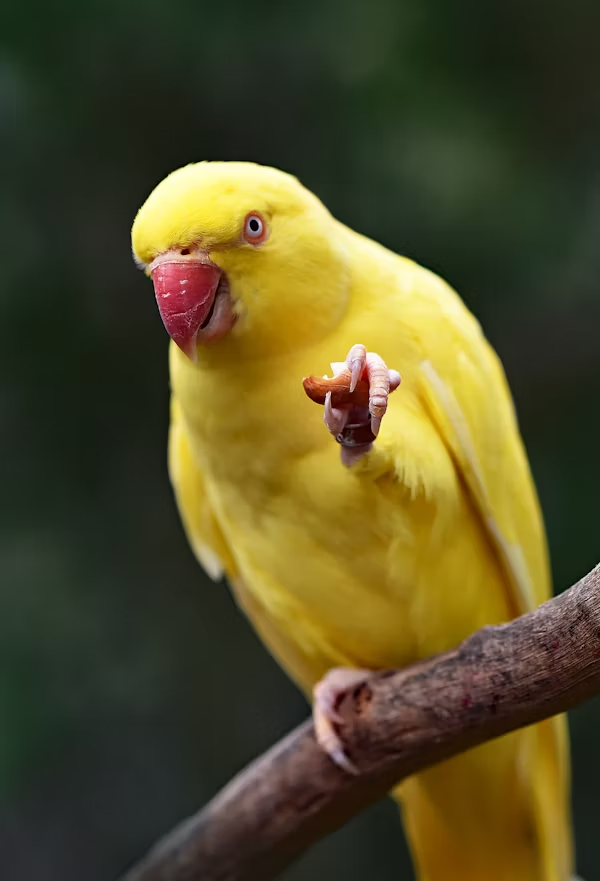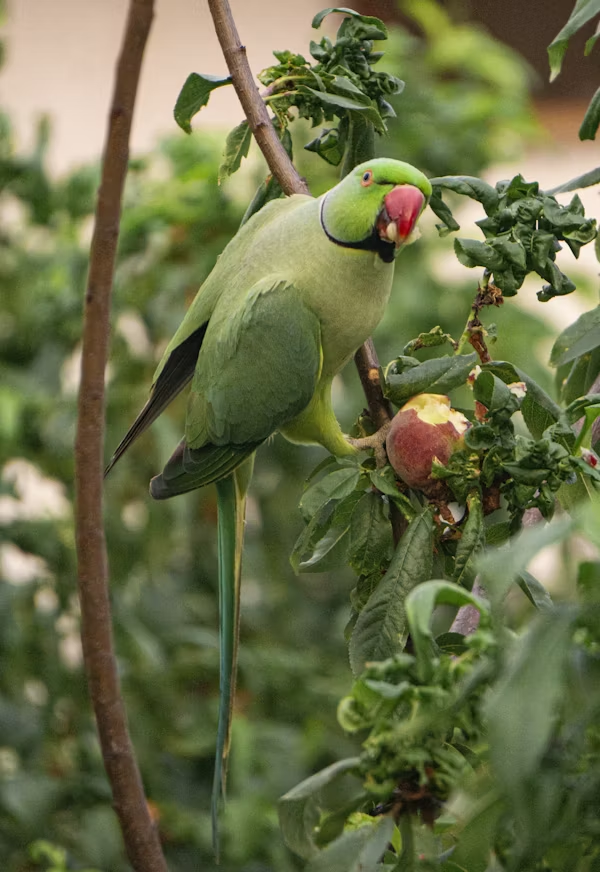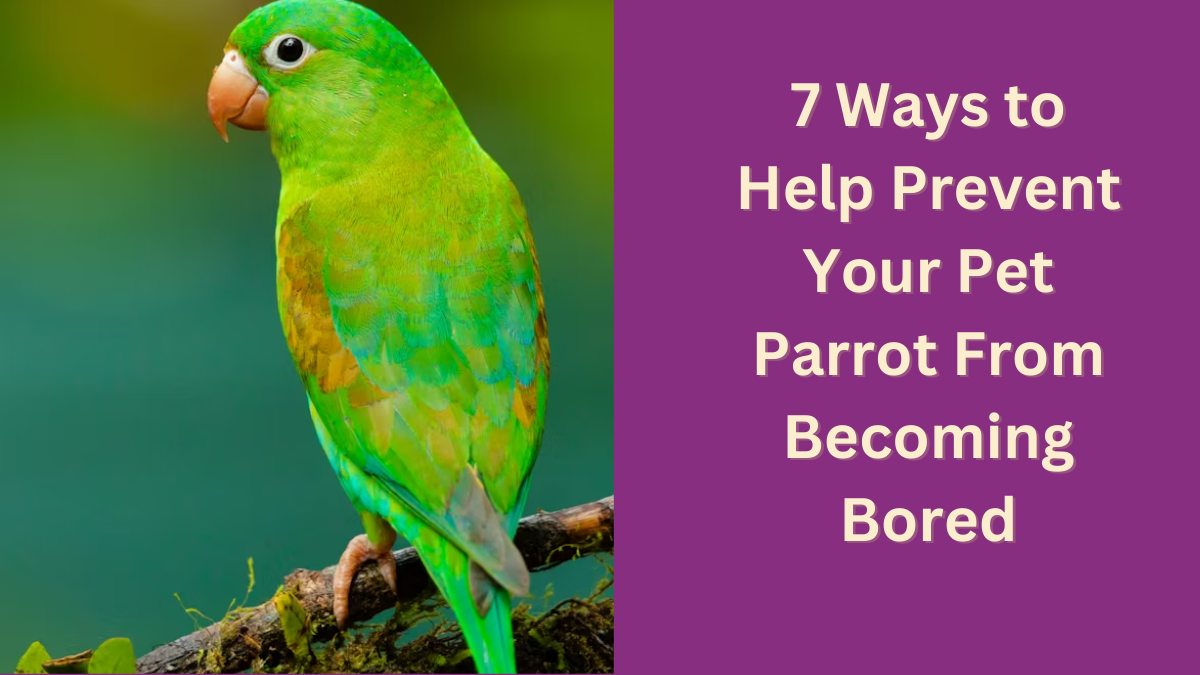Intelligent, friendly birds, pet parrot require constant mental and physical stimulus. Without suitable involvement, they could become bored and act disruptively, too much yelling, feather plucking, or even hopelessly. The entertainment value of your parrot determines its welfare. These seven useful ideas will help you stay from bored and ensure that your feathered friend is healthy and happy.
1. Supply a range of toys.
Parrots like variation in their activities, much like people do. Different kinds of toys help keep children interested and cognitively active. Think about suggesting:
- Wooden, leather, or natural fiber chewable toys
- Puzzle toys challenging their retrieval of sweets
- Toys for foraging that replicate their natural inclination for food hunt
- Shiny objects like mirrors or bells (but watch their interaction to avoid fixation).
Every few days, rotating objects helps your parrot remain inquisitive about their surroundings and avoids boredom.
2. Promote Motivating Action

Parrots hunt food for much of their wild life. Captive parrots deprived of this natural activity may become bored. Including foraging chances into their daily schedule not only offers entertainment but also helps them to solve problems.
Here’s how you support foraging:
- Store food inside of puzzle feeders.
- Stuff forms into woven palm leaves or paper rolls.
- Arrange food in their cage to inspire natural search behavior.
Making dinner an interesting challenge helps you to keep their mind engaged and reflect their natural impulses.
3. Spend Time With Your Pet Parrot Designed Specifically
Highly sociable creatures, parrots create close relationships with their human caregivers. Stress and loneliness can result from little interaction. Spend daily time on:
- Speaking and whistling to your parrot
- Training courses covering new terminology, techniques, or commands.
- Petting and hugging (should your parrot like it)
It can really make a difference even letting them perch on your shoulder while you go about regular business. Pet Parrot need company, hence regular engagement is really essential.
4. Provide under-cage supervised out-of-pocket time.
Long term confinement of a Pet Parrot in a cage can cause dissatisfaction and boredom. Allowing supervised, safe time outside their cage helps avoid these problems.
These suggestions help to enhance their out-of-cage experience:
- Arrange a play gym including swings, ladders, and perches.
- Set aside a specific play space with appropriate climbing frames and safe toys.
- Let them investigate rooms that have been bird-proofed—that is, free of risks including wires, ceiling fans, and poisonous plants.
More room and freedom inspire activity and discovery, which adds to their general contentment.
5. Bring in fresh sounds and surroundings

Naturally curious, parrots do best in dynamic surroundings. Maintaining their same boring environment can cause ennui. Including visual and aural stimulation will make all the difference.
Try these concepts:
- Turn on some natural noises or music. Many parrots find classical music or noises from the rainforest appealing.
- Some parrots enjoy cartoons or bird documentaries, so let them view TV with vibrant images.
- Safely introduce them to different places or individuals to expose them to fresh people and surroundings.
Variations in their daily environment help them to remain interesting and avoid annoyance.
6. Train and Instruct Novel Tricks
Highly bright and eager learners of new abilities are parrots. Training sharpens your bond and offers mental challenge. Here are some entertaining skills to impart:
- Command them to step onto your hand.
- Waving hands or shaking hands
- Replacing words and sounds
- Retrieving little items
Your Pet Parrot will find learning fun if you use positive reinforcement—that is, food and compliments. Regular, brief training courses keep them interested and ward against monotony.
7. Add a friend or a socializing venue
Being flock animals, parrots do well in social settings. If your means allow, think about choosing a companion bird (after proper introduction). Constant interaction, play, and company can all come from another Pet Parrot.
Should it not be feasible to add another bird, you can:
- Plan supervised playdates among other pet parrots.
- Bring them to aviaries or events geared toward birds.
- For self-interaction—only if it does not lead to aggressive behavior—place a mirror in their cage.
Whether with people, other birds, or interactive objects, social interaction helps lower boredom and loneliness.
Conclusion
Intelligent, gregarious birds, Pet Parrot require regular mental and physical engagement to remain content and healthy. Your feathery friend will be kept occupied and interested by a range of toys, encouragement of foraging, quality time spent, out-of-cage adventures, new sounds introduced, training, and socializing assurance.
Apart from being happier, a well-stimulated Pet Parrot is healthier, hence their company is even more beneficial. Try using these ideas; your parrot’s behavior and general state will clearly improve!
FAQs:
How can I find out whether my parrot is bored?
In parrots, signs of boredom include feather plucking, disruptive behavior, too loud screeching, and hunger loss. They might also look withdrawn or less engaged in conversation.
How often ought I to replace the toys for my parrot?
Toys should be rotated every few days to maintain their interesting and freshness. Frequent introduction of fresh textures, colors, and puzzle problems will pique their interest.
How can TV or music entertain my parrot?
indeed! Many parrots find great enjoyment in vivid TV presentations, nature noises, or music. Try several genres and see how they respond to identify the one they most like.

